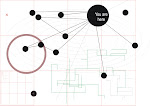 Over the past few years I have been pondering something I read by Paul Tillich about how the Spirit works amidst structures. Our culture following in an individualistic libertarian vein of thought perceives structures as oppressive to the autonomous freedom of the person. They impose burdens upon people. They are oppressive in their ideologies. These ideas spill over too into our thoughts of the church and the shape of our ecclesiology. The church as an institution has suffered a great deal in the last 200 years at the expense of the individual liberties our country promotes. The church is perceived to be an impediment to self expression and fulfillment. I have heard some say that the structures of ecclesiology seem to stop or resist the movements of the Spirit thus they jettison the institution itself rendering salvation as a matter between the individual person and their personal savior Jesus.
Over the past few years I have been pondering something I read by Paul Tillich about how the Spirit works amidst structures. Our culture following in an individualistic libertarian vein of thought perceives structures as oppressive to the autonomous freedom of the person. They impose burdens upon people. They are oppressive in their ideologies. These ideas spill over too into our thoughts of the church and the shape of our ecclesiology. The church as an institution has suffered a great deal in the last 200 years at the expense of the individual liberties our country promotes. The church is perceived to be an impediment to self expression and fulfillment. I have heard some say that the structures of ecclesiology seem to stop or resist the movements of the Spirit thus they jettison the institution itself rendering salvation as a matter between the individual person and their personal savior Jesus.I am not suggesting that the personal relationship does not have its merits, though it is not strictly listed in the bible and is a fairly recent addition to our Christian vocabulary and language. And yet, it is an over-simplification of the Christian faith that ignores the body of Christ as God’s chosen vessel of embodying the liberating message of the Gospel to the world. The church is certainly a broken vessel, and yet it is how God, in the name of Christ, empowered by the Sprit is at work within our world. We cannot dismiss it so readily as we are apt to do.
The image on the left is a blurred long exposure of a hanging chandelier in a Sioux Falls hotel. The image on the right is a pendant light that hangs in a stairwell at Sioux Falls Seminary. Their juxtaposition creates a conversation about the tenuous balance of fluidity and rigidity of the ecclesial constitution which becomes the bearer of God’s light in the world.







